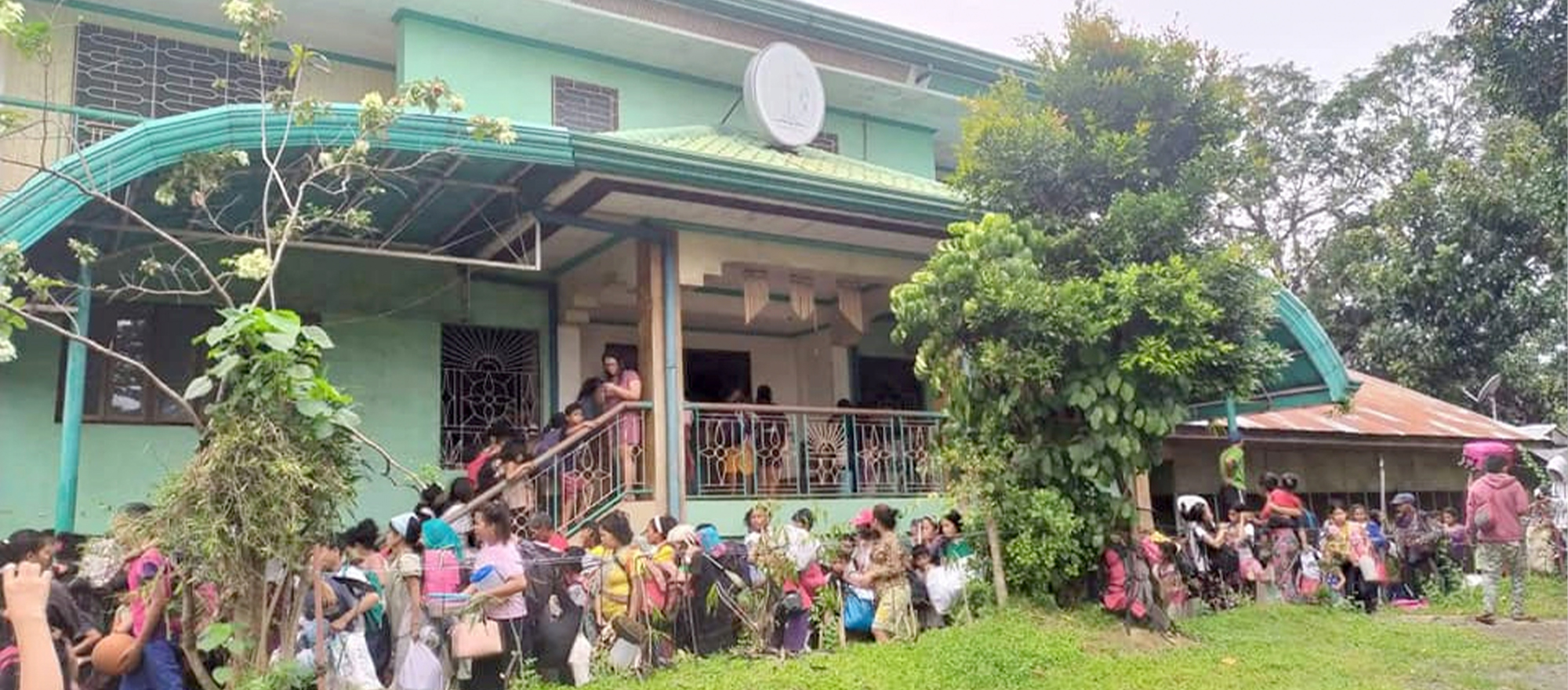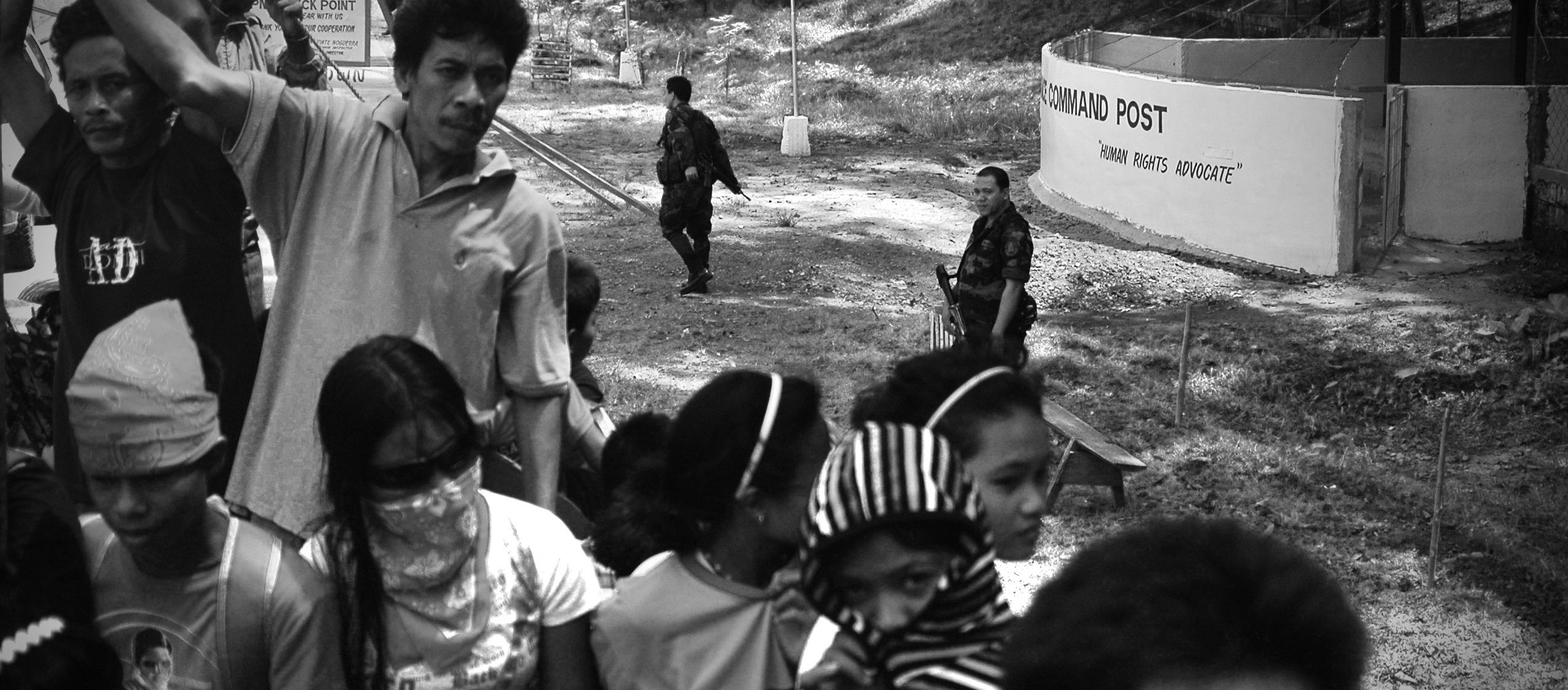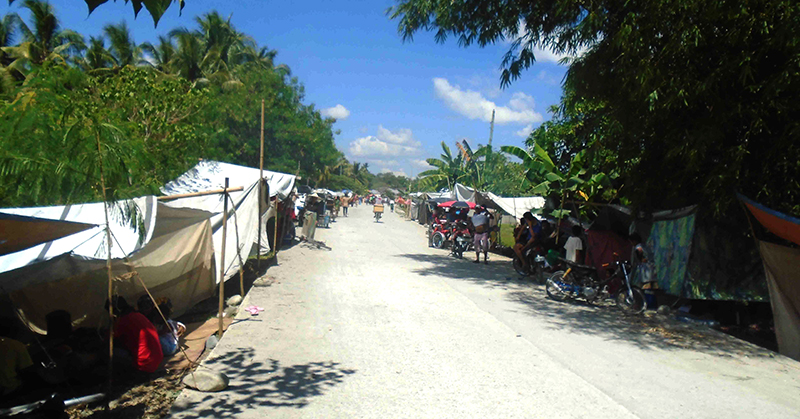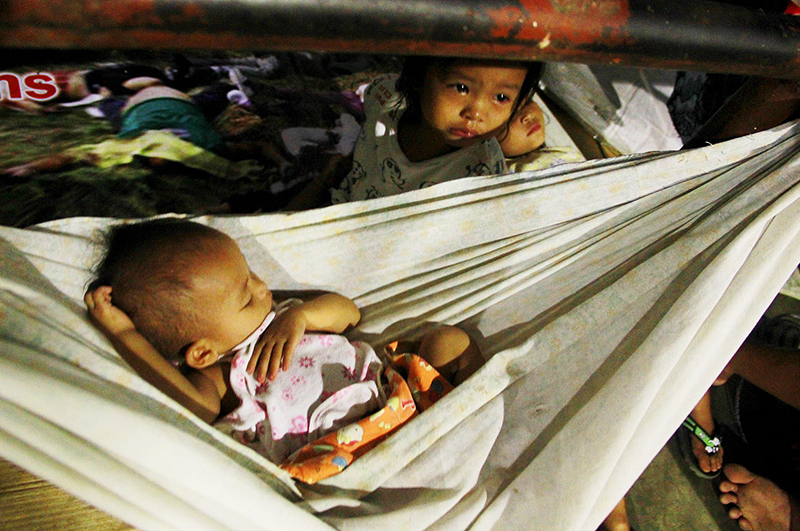Magkahunao Lumad: Beyond the reach of social services
The only sign of government that the Magkahunao Lumad see nowadays is the presence of an abusive military.
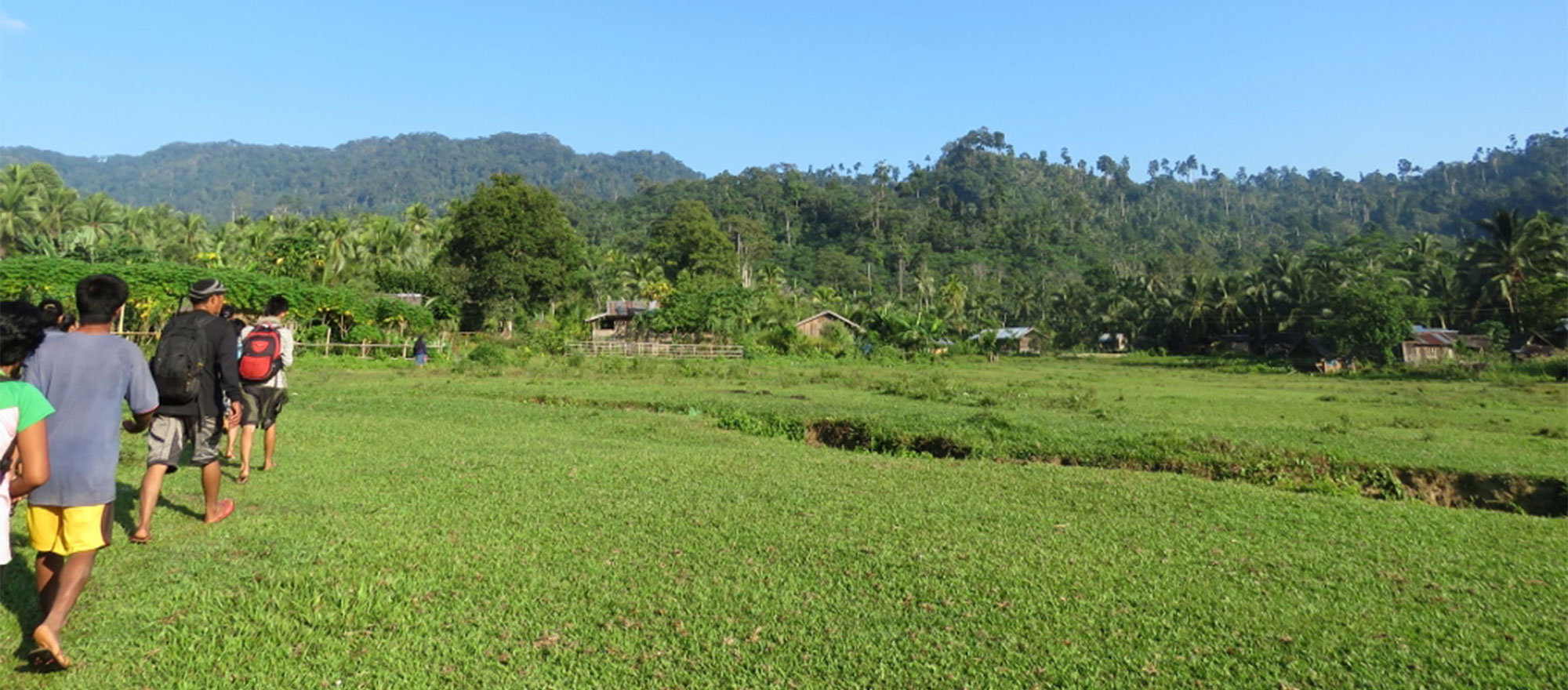

Lumad communities are not reached by government services but are tormented by the presence of the military.
The continuous presence of the military does not mean the delivery of social services to Lumad communities. This is what Pinoy Weekly learned upon visiting Sitio Magkahunao, now an abandoned village in Caraga region, located in the mountainous part of San Agustin town of Surigao del Sur province.
To get to Sitio Magkahunao, one has to pass through rivers and a forest—that is, after enduring an hour’s ride of habal-habal, which is a modified motorcycle that can carry up to six passengers.
The hike to the place was no joke. Apart from the four-hour walk, there was always the danger of slipping through giant boulders and mountain ridges. The journey might be an adventure for tourists, but for local elders, women and children, it was once a normal part of their daily lives.
Despite its remoteness to the urban centers, Magkahunao has many of the resources that the Lumad need. The rich land allows falcatta trees to grow and be used for their livelihood, the rivers provide them water, the forest provide them food, and even if the government failed to provide them education, they worked together to build their own alternative learning school to educate their children.
The Magkahunao Tribal Filipino Community School is a non-governmental institution that teaches children Filipino, English, Science, Math, and Agriculture. Clearly, the Department of Education was not yet able to reach Magkahunao and other places as remote as the village. Fortunately, non-governmental organizations from the church and various sectors made efforts to enable the Lumad to be educated without having to move out of their ancestral lands.
Because of the recent killings of Lumad leaders and continuous militarization in the area, people were forced to flee their homes and seek shelter in evacuation centers. The Datu of Magkahunao, however, chose to stay behind despite fearing for his own life. He is alone in the village, although a few evacuees would occasionally come back to check on possessions and then leave before dark. The evacuees travel from the evacuation centers to their homes and back only through foot, without riding the habal-habal.

‘Military-infested’
The Datu told vivid stories of abuse in the hands of the military. He called military and paramilitary men “tulisan” in Bisaya, which means armed robbers. He prohibited the selling of alcohol in his area because the “tulisans” became more monstrous when they get drunk and do not pay for the items that they get from local stores.
Even after the evacuation, state terrorism continues in the ancestral land of Magkahunao. Two houses, which contained materials that were useful for the community like generators and farming tools, were burned down to ashes only a week after the residents left. Some of the abandoned houses were also ransacked, as if the perpetrators were looking for something. The victims said that no formal investigation into these cases of arson and robbery has been conducted up to the present.
In response to demands to halt the militarization of Lumad communities and the extra-judicial killings of Lumad leaders in the CARAGA region, the national government remained stone-deaf. Instead of providing concrete solutions to the human-rights violations, top government officials who mouth the “daang matuwid” slogan only denied responsibility for the crimes. “There is no campaign to kill anybody in this country. There is a campaign to go after the culprits of these crimes regardless of who they are,” said Pres. Noynoy Aquino himself.
The Lumad prefer the difficult life in evacuation centers over staying in their ancestral lands and enduring the atrocities committed by armed paramilitary groups which were allegedly organized and funded by the Armed Forces of the Philippines. A barangay captain from one of the affected areas attested in an interview that the AFP is indeed connected with the paramilitary forces that wander Magkahunao and other Lumad ancestral lands.

Future for Magkahunao Lumad
This is not the first time that the community had to evacuate because of militarization. The Datu of Magkahunao narrated instances when he was asked by the “tulisan” to sign a paper in exchange for money. He said that he, his family and his people were already used to being “pobre” or poor and that he does not need more money to live.
The Lumad are simple people who are now asking for a simple thing – that the military leave their ancestral lands. Until the government sincerely responds to this demand, more Lumad families will be driven out of their homes.
The Aquino government remains proud when it talks about the “daang matuwid” program and the policies that go with it. The lives of the poor, however, show little or no change at all.
Despite the much-ballyhooed pouring of foreign investments in its mining, logging and plantation sectors, CARAGA remains one of the poorest regions in the Philippines.
Aquino said “Kayo ang boss ko” in his inaugural address, a promise which has been proven to be just another sugar-coated lie for the majority of the Filipinos, empty rhetoric which persists until the very last year of Aquino’s presidential term.

